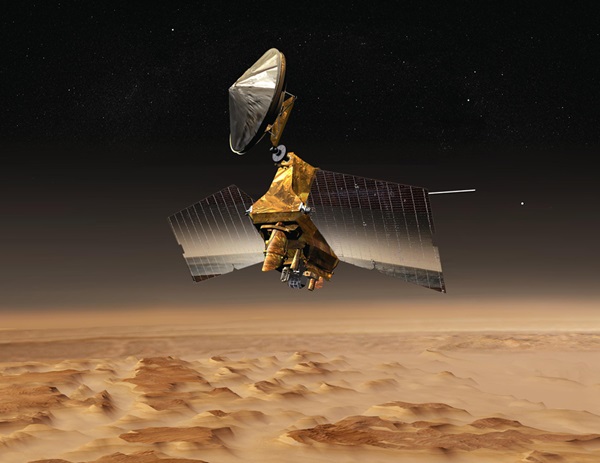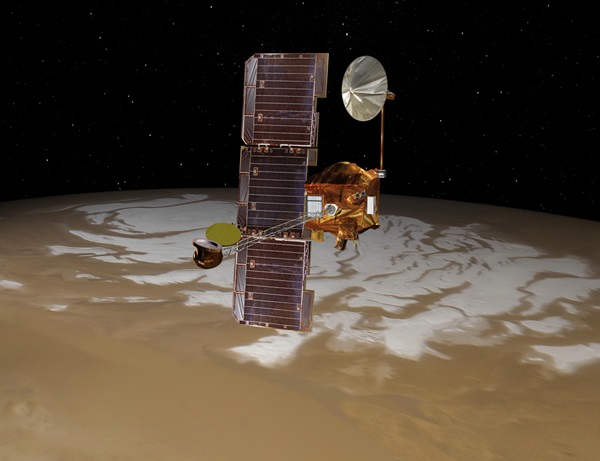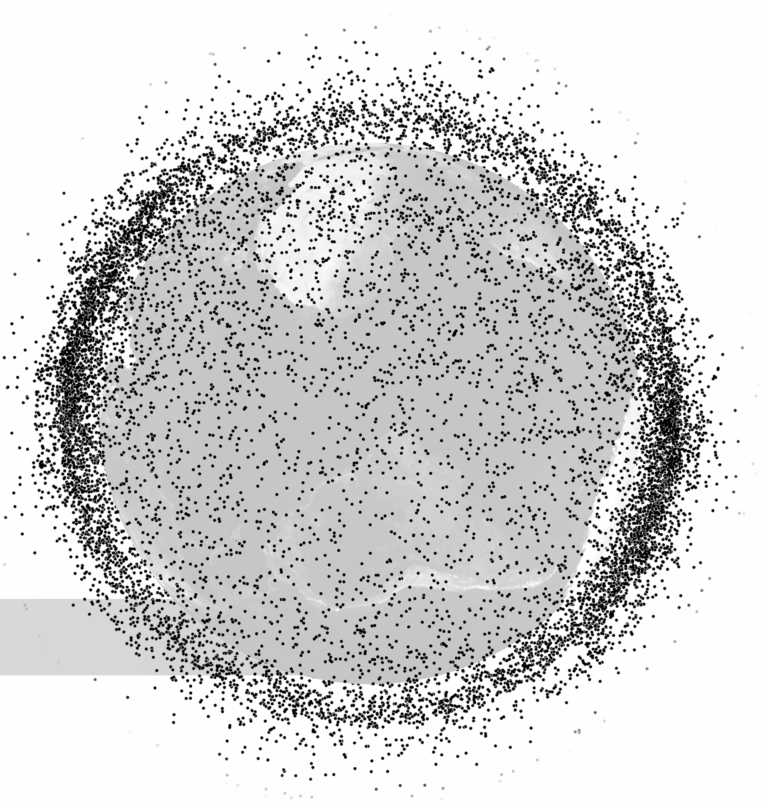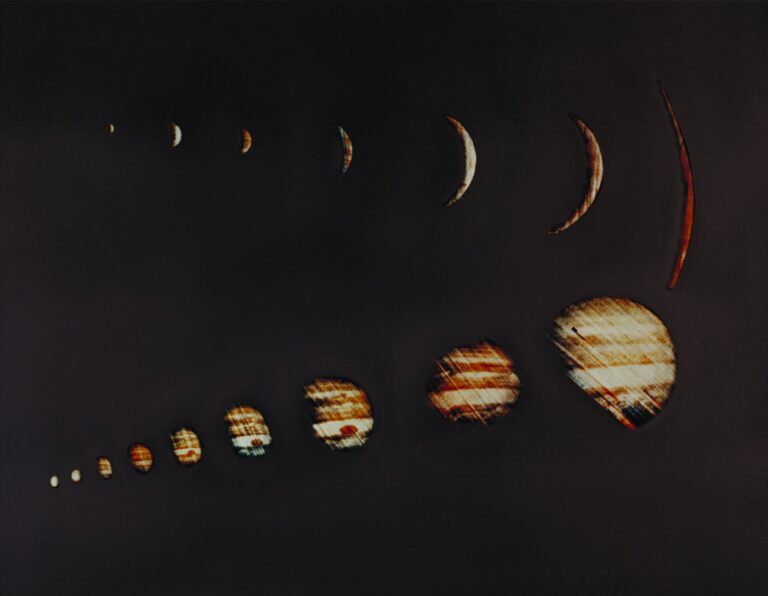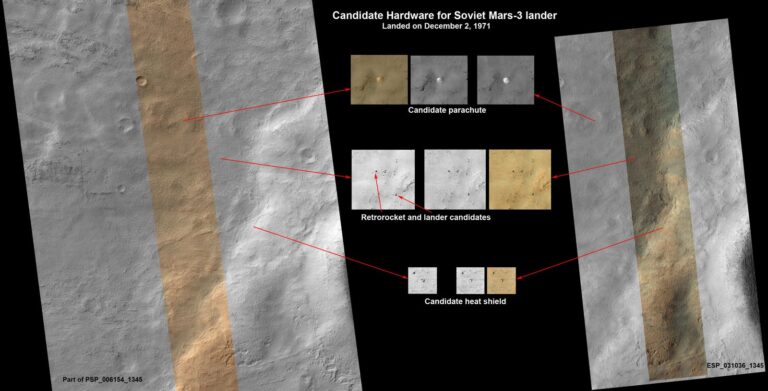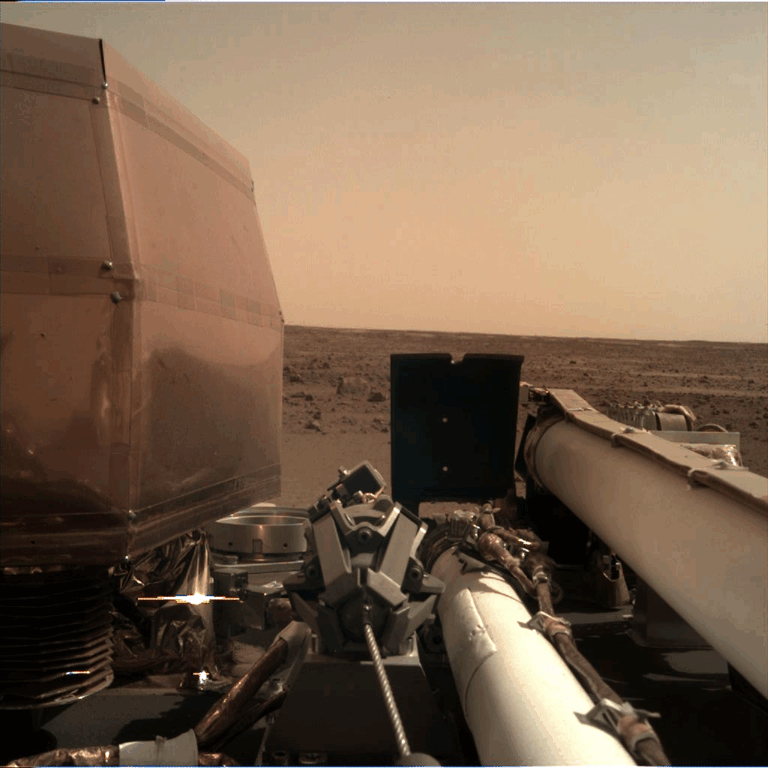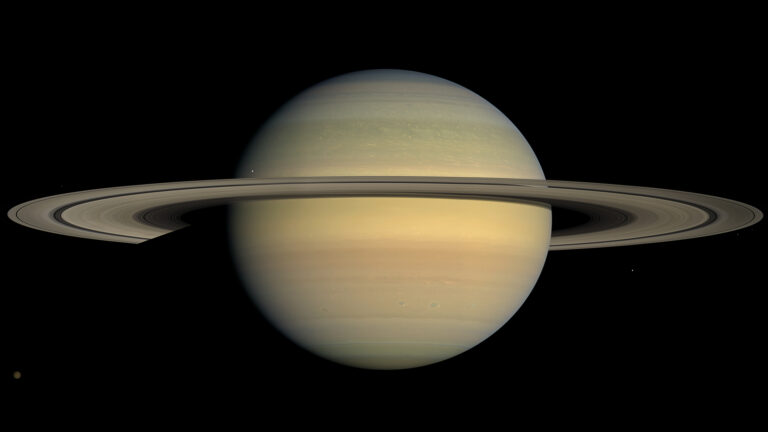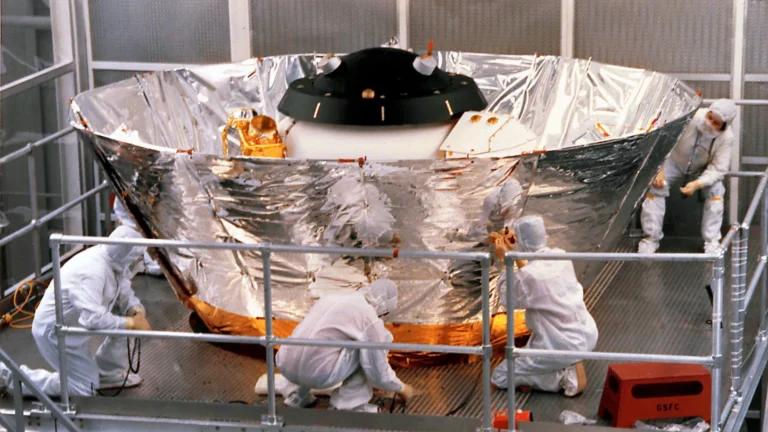Key Takeaways:
Mars Odyssey, Mars Reconnaissance Orbiter and the Mars Atmosphere and Volatile Evolution (MAVEN) orbiter all are part of a campaign to study Comet Siding Spring (C/2013 A1) and possible effects on the martian atmosphere from gases and dust released by the comet. The comet hurtled past Mars at about 125,000 mph (56 kilometers per second), coming within about 87,000 miles (139,500km) of the planet. That is equivalent to about one-third of the distance between Earth and Earth’s Moon.
The three NASA Mars orbiters join two Mars rovers and other assets on Earth and in space in the study of Comet Siding Spring. This comet is making its first visit this close to the Sun from the outer solar system’s Oort Cloud, so the concerted campaign of observations may yield fresh clues to our solar system’s earliest days more than 4 billion years ago.
Objectives of the observing program are to attempt to image the comet nucleus, to study its surrounding coma of dust and gas, and to search for signatures of that material interacting with the Mars atmosphere. Observations of the comet will continue for another day or so, as the comet and Mars separate, with the comet reaching its closest approach to the Sun in about a week, on October 25.
NASA’s Mars Reconnaissance Orbiter, which has sent home more data about Mars than all other missions combined, is also now providing data about a comet that buzzed the Red Planet on October 19.
The orbiter continues operating in good health after sheltering behind Mars during the half-hour when high-velocity dust particles from Comet Siding Spring had the most chance of reaching the paths of Mars orbiters. It maintained radio communications with Earth throughout the comet’s closest approach, at 11:27 a.m. PDT (2:27 p.m. EDT), and the peak dust-risk period centered about 100 minutes later.
“The spacecraft performed flawlessly throughout the comet flyby,” said Mars Reconnaissance Orbiter Project Manager Dan Johnston of NASA’s Jet Propulsion Laboratory, Pasadena, California. “It maneuvered for the planned observations of the comet and emerged unscathed.”
Following the critical period of dust flux, the orbiter is communicating at 1.5 megabits per second with NASA’s Deep Space Network. It remained on Side A of its two redundant computers, and all subsystems are working as expected.
Downlink of data has begun from Sunday’s comet observations by three instruments on the Mars Reconnaissance Orbiter. The full downlink may take days. These instruments — the High Resolution Imaging Science Experiment (HiRISE), the Compact Imaging Spectrometer for Mars (CRISM), and the Context Camera (CTX) — also observed the comet for days before the flyby and will continue to make observations of it in the next few days. The orbiter’s other three instruments are being used to study possible effects of gas and dust in the comet’s tail interacting with the atmosphere of Mars. These are the Mars Climate Sounder (MCS), the Mars Color Imager (MARCI) and the Mars Shallow Radar (SHARAD).
The data the Mars Reconnaissance Orbiter acquired during the comet’s closest approach to the Red Planet are now being transmitted to Earth, but it will take many hours before downlink is complete and processing can start.
NASA’s newest orbiter at Mars, MAVEN, took precautions to avoid harm from a dust-spewing comet that flew near Mars on Sunday and is studying the flyby’s effects on the Red Planet’s atmosphere.
The MAVEN spacecraft reported back to Earth in good health after about three hours of precautions against a possible collision with high-velocity dust particles released by Comet Siding Spring.
“We’re glad the spacecraft came through, we’re excited to complete our observations of how the comet affects Mars, and we’re eager to get to our primary science phase,” said MAVEN Principal Investigator Bruce Jakosky of the University of Colorado, Boulder.
MAVEN began orbiting Mars on September 21. The opportunity to study this rare near-miss of a planet by a comet comes during the project’s commissioning phase. A few weeks of instrument calibration and orbit fine-tuning remain before the start of the primary science phase. The mission will study the upper atmosphere of Mars and its interaction with the solar wind.
From about 10:45 a.m. to 2 p.m. PDT (1:45 p.m. to 5:00 p.m. EDT), MAVEN kept in a defensive posture to reduce its profile relative to the direction from which the comet’s high-velocity dust particles would come. In that “hunkered down” orientation, its main antenna was not facing the right way for transmitting to Earth, so communications were maintained at low data rate via a secondary antenna. Also, the mission performed a maneuver on October 2 that set its orbit timing so that the spacecraft was behind Mars, relative to the possible dust flow, from about 12:53 p.m. to 1:23 p.m. PDT (3:53 p.m. to 4:23 p.m. EDT).
Downlink of data has begun from MAVEN observations of the comet and Mars’ atmosphere. Some observations are designed to provide information about the composition of the gases and dust being released by the comet. Others are investigating possible interaction between material from the comet and the atmosphere of Mars.
The longest-lived robot ever sent to Mars came through its latest challenge in good health, reporting home on schedule after sheltering behind Mars from possible comet dust.
NASA’s Mars Odyssey was out of communications with Earth, as planned, while conducting observations of Comet Siding Spring on Sunday as the comet flew near Mars. Odyssey had performed a maneuver on August 5 to adjust the timing of its orbit so that it would be shielded by Mars itself during the minutes, around 1 p.m. PDT (4 p.m. EDT) Sunday, when computer modeling projected a slight risk from high-velocity dust particles in the comet’s tail.
“The telemetry received from Odyssey this afternoon confirms not only that the spacecraft is in fine health but also that it conducted the planned observations of comet Siding Spring within hours of the comet’s closest approach to Mars,” said Odyssey Mission Manager Chris Potts of NASA’s Jet Propulsion Laboratory, Pasadena, California, speaking on Sunday from mission operations center at Lockheed Martin Space Systems, Denver.
Comet Siding Spring observations were made by the orbiter’s Thermal Emission Imaging System (THEMIS). Resulting images are expected in the coming days after the data is downlinked to Earth and processed. THEMIS is also scheduled to record a combined image of the comet and a portion of Mars later this week. In addition, the Odyssey mission is using the spacecraft’s Neutron Spectrometer and High Energy Neutron detector to assess possible effects on Mars’ atmosphere of dust and gas from the comet.


